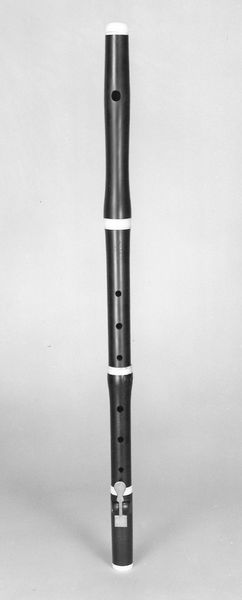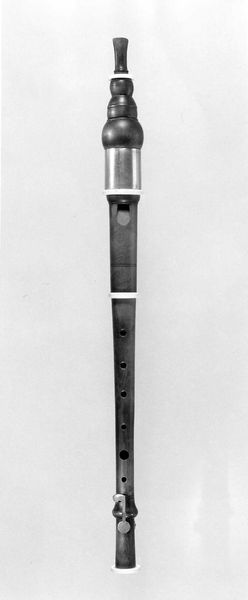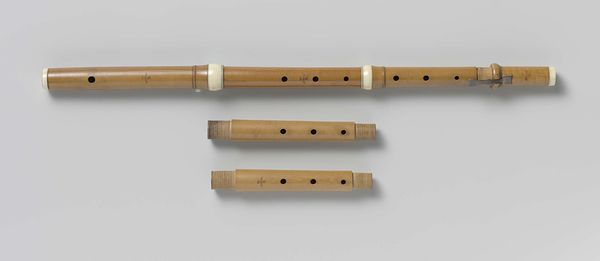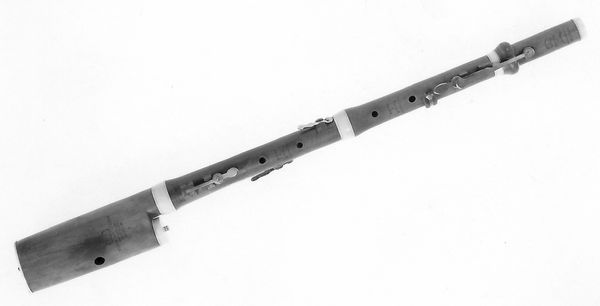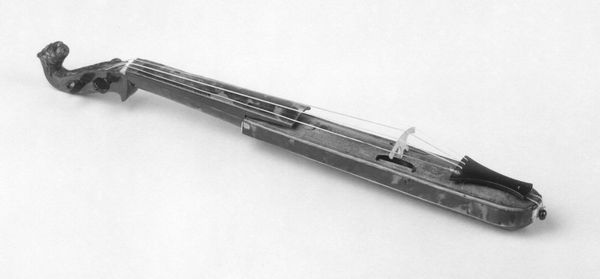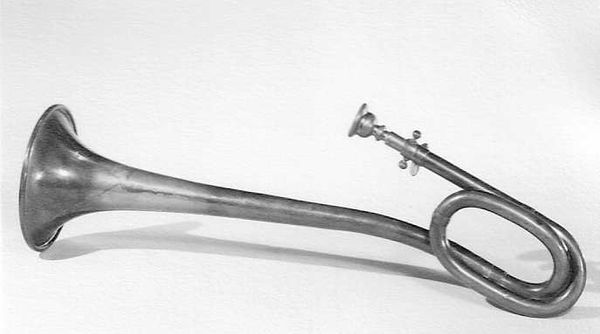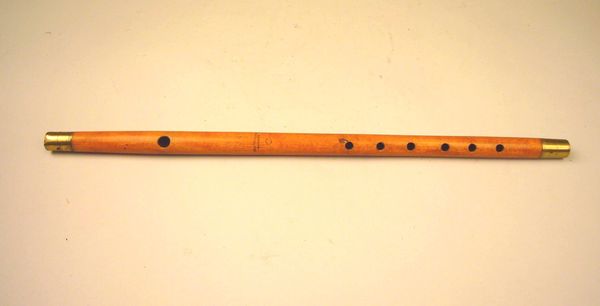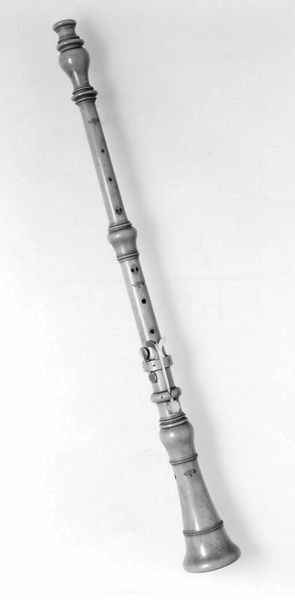
drawing, photography, wood
#
drawing
#
sculpture
#
photography
#
men
#
wood
#
musical-instrument
Dimensions: L. 60 cm Embouchure L. 53.2 cm
Copyright: Public Domain
Editor: So, this object is called "Flute," crafted sometime between 1800 and 1850. It's currently held at The Met, and credited to Ferris & Giffin. Initially, the photography lends a rather sterile quality, don't you think? A kind of removed, museum-specimen feel. What nuances are perhaps missed because it is an image, or what feelings does this image of an early flute elicit in you? Curator: It’s funny you say that; immediately I'm reminded of a concert I stumbled into once, pure serendipity, where a musician coaxed the most heart-wrenchingly human sounds from a very similar instrument. But as a cultural object this flute isn't just about melody, it represents status and taste, particularly in that period. The simple wood belies an elegance; who owned this, what music filled their rooms? Editor: Status you say. I had not picked up on that at all. Tell me more! Curator: Well, think about it – owning a finely crafted instrument indicated a certain level of disposable income, and being proficient enough to play it? That was social currency. I mean, imagine the drawing rooms where this flute might have been played – conversations, courting… Editor: Ah, I see, like something Austen characters might use for gentle pursuits! Curator: Exactly! It’s not just an instrument; it's a symbol woven into the fabric of its time. Also consider what’s missed: How did this thing feel in someone’s hands? Did they tap their foot when playing it? Editor: Wow, that gives the photograph a totally different spin. Instead of a still-life object, I now have this image of the drawing room. The human dimension just floods into view. Curator: Precisely! Seeing beyond the object allows art to awaken historical ghosts. It’s as much a key as it is a flute, if that makes any sense.
Comments
No comments
Be the first to comment and join the conversation on the ultimate creative platform.
